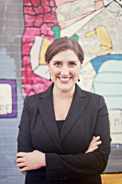
Leah Hamilton, M.S.
Has Endowment Become a Dirty Word?
Posted by Dec 13, 2012 3 comments

Leah Hamilton, M.S.
 Leah Hamilton
Leah Hamilton
Endowment. Much like the word “elite” or “patronize,” the term “endowment” seems to have acquired a negative connotation. The traditional endowment model was sold as a core strategy of sustainability for an organization; the interest provided reliable budgetary support, and the principle was the legacy of dedicated arts patrons. But organizations began to use the fund’s annual draw in place of fundraising. Then, when times got tough, the principle became a financial lifeline. When this happened, a new trend emerged; funders began to redirect their initiatives towards innovation and creative placemaking instead of endowment. But, as with most trends, there are exceptions to the rule. Springfield, MO is nationally recognized as a collaborative community, as highlighted recently by Mayor Robert Stephens on the Huffington Post. With consistent job growth in the city as well as lower than average unemployment rates, Springfield’s collaborative nature has helped the community weather the recession. In the arts community, more than 30 local groups share The Creamery Arts Center. The 35,000-square-foot building, once home to the Springfield Creamery Co. and later the first distribution center for O’Reilly Automotive, includes administrative offices, as well as an exhibition hall, board room, arts library, arts classroom, film editing bay, a shared costume shop, and set design/fabrication studio.
As the arts groups began to “live” together around 2002, a unique spirit of collaboration emerged along with the need for long-term strategies to sustain the good work of the arts organizations, their programs and facilities. One highlight of addressing that need came when Springfield was chosen as the second city in the nation to create an action plan for arts education as part of The Kennedy Center’s Any Given Child initiative. With no local tax mechanism dedicated to aid operating costs of area arts groups and few resources for individual groups to focus on legacy and major giving, the need to work together became apparent. In 2010, after two years of planning and many drafts of contracts emailed into the wee hours of the morning, the Springfield Arts Collaborative was born. The mission:
- Increase the willingness of new community donors
- Expand the donor bases of each partner
- Maximize the capacity of current and potential donors
- Minimize costs by jointly engaging professional fundraising expertise
- Reduce donor fatigue through combined and coordinated asks
The contract required 100% monetary board participation and included a “cannibalization policy” that ensured annual giving as a priority over one-time legacy gifts. How does it work? In theory, it uses the best practices of the “united arts fund” model with the one-stop-ask and the “arts center” model that incorporates funding for multiple organizations under one roof. However, the organizations all maintain their autonomy. Seventy-five percent of funds raised are divided based on budget among the five founding arts organizations (Springfield Ballet, Springfield Regional Opera Lyric Theatre, Springfield Symphony, Springfield Little Theatre, and the Springfield Regional Arts Council). The remaining 25% is allocated between three shared funds designed to benefit the Springfield arts community as a whole: the “Arts-In-Education” fund (which will fund the action goals in the Any Given Child plan), the Creamery Arts Center Fund, and the Landers Theater fund (an historic theatre in downtown Springfield). The Community Foundation of the Ozarks manages the funds and their distribution. Yesterday, the Arts Collaborative launched its final phase by announcing a $1.365 million gift to campaign from the O’Reilly family (O’Reilly Automotive). The campaign also announced its goal to raise an additional $2 million over the next 18 months. The uncertainty of the economy has presented difficulties, and being out of step with national funding trends of innovation and sustainability has proven a challenge. Despite that, there is over $6 million in verbal and written pledges to date. Funding innovation can be difficult and what is good for one community may not be for another, but, for Springfield, the time for building long-term funding security is now; not so we can replace annual fundraising efforts but so we can provide security that will allow our arts groups to take more risks and create better art. And we’re doing it Springfield-style; addressing community needs with the arts through a partnership where the whole is greater than the sum of its parts.

Comments
I've often wondered why more groups don't use endowments or don't have them. Seems like fund-raising strategy needs at least two components - operating right now and capital for the future (and to generate spin-off income that in turn can foster even more projects!)
In a different direction I'm sure you are familiar with Savanah GA's penny tax - I think for the Arts. I believe it is a penny on every purchase - 1 cent on a dollar, 1 cent on a hundred dollars. Small enough to not be noticed by the buyer but over time, it adds up.
This is the type of locally-responsible and privately-initiated arts funding model nearly every city in America needs. Brava Springfield!
Howdy! I know this is kind of off topic but I was wondering which blog platform are you using for this site? I'm getting tired of Wordpress because I've had problems with hackers and I'm looking at alternatives for another platform. I would be fantastic if you could point me in the direction of a good platform.San Francisco Roofing, 1276 7th Ave., San Francisco, CA 94122 - (415) 800-4100